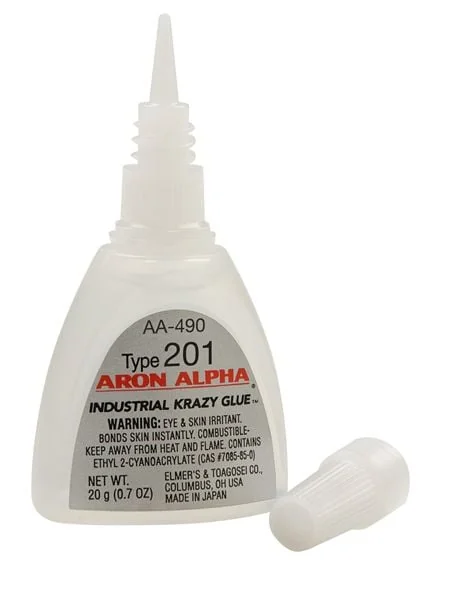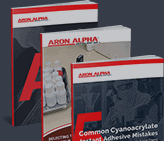Why Should I Use Super Glue for Rubber Bonding?
Rubber has many applications across a wide range of industries—from tires on cars and roofs on buildings to tubes in industrial equipment. In many of these situations, the rubber must be bonded to another piece of rubber, another kind of rubber, or another type of substrate (e.g., metal, wood, or plastic) to create a usable product. Forming an effective bonding necessitates the proper selection and application of an adhesive. The wrong type and method could result in a weak bond (or no bond) or damage the substrates.
How to Bond Rubber
Bonding rubber can be challenging if you do not know where to start. Below, we highlight the key steps in achieving a strong bond when using rubber materials.
1. Identify Your Type of Rubber
Before you apply or choose an adhesive, it is important to understand the type of rubber you’re using. There are numerous rubber materials available, each of which offers unique characteristics that influence which applications it is used and how it can be bonded. The rubbers most commonly used in bonding applications include:
- Nitrile Rubber. This rubber is resistant to abrasion, cuts, oils, and relatively extreme temperatures. It is typically used for cable jacketing, conveyor belts, gaskets and O-rings, hoses, and print rollers.
- Butyl Rubber. This rubber exhibits high flexibility. It is generally utilized for linings, seals and stoppers, tubes, and valve seating.
- Polyurethane Rubber. This rubber offers many advantageous properties, including excellent abrasion resistance, tensile strength, and tear resistance. It is often used for modeling and molds.
- Natural Rubber. This rubber is abrasion-resistant, tear-resistant, and waterproof. It is commonly used for carpet backing, gaskets, and other seals, and mounting.
- Silicone Rubber. This rubber demonstrates excellent resistance to damage from high heat. That’s why it is a popular pick for cookware/bakeware, gaskets and O-rings, and medical devices.
- EPDM Rubber. This rubber is flexible and recycle. It is used for a variety of products, such as hoses and seals.
2. Prep the Rubber for Adhesion
Regardless of the type of rubber, it is important to prepare its surface for bonding before applying the adhesive. Otherwise, any contaminants present on its surface (e.g., dirt, grease, coatings, lubricants, etc.) can prevent the formation of a strong adhesive bond. Typical preparation measures include decreasing the surface with a solvent. Generally, isopropanol is recommended since acetone is too strong from certain types of rubber.
It’s also important to note that some rubbers contain plasticizers that work their way to the surface over time. As a result, debonding may occur if the proper adhesive is not used.
3. Choose the Best Glue for Rubber Adhesion
There are many types of adhesives available for use in rubber bonding applications, each of which is suitable for particular types of rubber and bonds. As such, the best glue for rubber bonding can vary from project to project since each application involves different materials and requires different bond specs.
The most commonly used glue for rubber bonding is cyanoacrylate adhesive (i.e., super glue). It is often considered the best glue for rubber since it quickly forms a strong bond between substrates. However, other types of glues can be utilized if super glue is not appropriate for the particular rubber bonding application. For example:
- Silicone adhesives are commonly used to bond silicone rubber and other materials.
- Structural adhesives are generally utilized when a slower cure time is needed to ensure accurate alignment and spreading.
- Epoxy adhesives are typically employed to bond rubber to other types of substrates (e.g., metal or glass).
Industries That Utilize Cyanoacrylates
Due to their ability to create fast and reliable bonds, cyanoacrylates find application in the assembly operations of many industries. Typical examples of parts and products for which they are used include:
- Aircraft components
- Appliance parts
- Automotive subassemblies
- Furniture pieces
- Medical devices
- Musical instruments
Cyanoacrylate Adhesives From Aron Alpha
Rubber bonding is an essential step in the production of many components and assemblies. For many of these production operations, cyanoacrylate adhesives are the top choice of glue due to their numerous bonding advantages.
Need cyanoacrylate adhesives for your next rubber bonding project? Aron Alpha is the ideal source! Our Industrial Krazy Glue™ line offers the broadest selection of industrial high-performance, application-specific instant (cyanoacrylate) adhesives. Our products are used in virtually every industry, from arts and crafts to general industrial assemblies to highly technical electronic assemblies.
To learn more about our product offerings, check out our cyanoacrylate adhesives page or contact us today. For assistance choosing the right glue for your application, request a quote.







